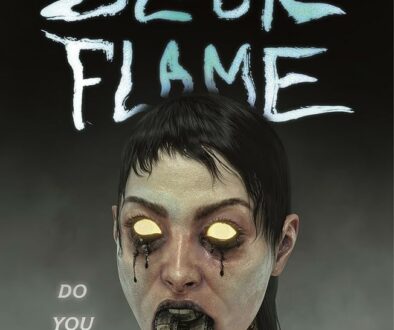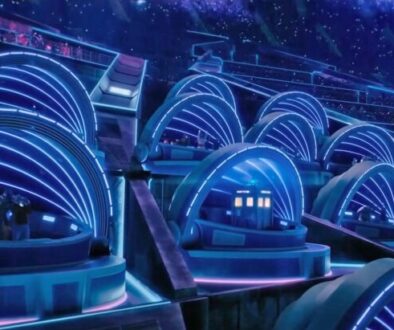On Shabogan Graffiti
 I am often asked about Shabogans. People want to know whether this or that person they’ve seen could be a Shabogan, or whether this or that group they’ve seen could be Shabogans. I generally reply that if you’ve seen them, they’re not Shabogans. As with elves (at least of the household chore performing variety) the quintessential trait of the Shabogan is that one does not see them. Castellans will sometimes speak of arresting, detaining, charging, and imprisoning Shabogans… but this is simply how Castellans talk. They certainly spend a great deal of their time doing all these things to other gradations of the plebeian masses on Gallifrey, but Shabogans are never caught. At least as far as we know.
I am often asked about Shabogans. People want to know whether this or that person they’ve seen could be a Shabogan, or whether this or that group they’ve seen could be Shabogans. I generally reply that if you’ve seen them, they’re not Shabogans. As with elves (at least of the household chore performing variety) the quintessential trait of the Shabogan is that one does not see them. Castellans will sometimes speak of arresting, detaining, charging, and imprisoning Shabogans… but this is simply how Castellans talk. They certainly spend a great deal of their time doing all these things to other gradations of the plebeian masses on Gallifrey, but Shabogans are never caught. At least as far as we know.
There are, supposedly, Shabogan legends about one of their number being caught drawing a moustache on a portrait of Chancellor Tavia, and subsequently being exhibited in chains in the Panopticon for the Time Lords to gaze upon with excited curiosity and thrilled loathing… but as with all accounts of what Shabogans think or say, we must treat it with suspicion, as it comes to us via the Time Lords and their genteel curation of facts. The story goes that the exhibited Shabogan starved himself to death out of sheer fanatic perversity, despite the best efforts of his captors to save him. In the accounts of ruling classes, the bravery and principled resistance of lesser mortals is always recounted as fanatic perversity.
It has often been observed that history is, by definition, written by those with the leisure time to sit around writing it. It is thus, almost exclusively, the history of gentlemen, written by and for gentlemen. Moreover, it is written by gentlemen who take it as read that, were they retroactively reincarnated in the past, they would be reincarnated as members of whichever patrician class they happen to be writing about. Of course, when it comes to Time Lord historians, such assumptions have an extra edge of plausibility about them, which only makes them more toxic.
The great difficulty with relating the history of the Shabogans is that there are very few primary sources. Generally, most historians think that most Shabogans themselves were, and presumably still are, far too busy working and/or rebelling against work, to leave time for writing things down. Of course, it is equally possible that Shabogans spend a great deal of their time writing, reading, sharing manuscripts, debating theoretical and philosophical positions, etc, and that they simply guard their privacy so closely that no outsider has ever rumbled them at it. It is, needless to say, illegal on Gallifrey for Shabogans to even learn to read and write, much less to actually do it. Literacy with intent is a crime for which a Shabogan might – theoretically – be punished with dispersal. Which is why, for Shabogans, graffiti is such a big deal. It is not simply the things they might say when they scrawl on one of the green glimmering corrugated walls of the Ministry of Euphemisms or the Permanent Conclave of Obscurantism, it is the very fact that they write anything at all which is so incendiary. The medium truly is the message.
It is from a consideration of the relatively few instances of Shabogan graffiti which can be relied upon as accurately relayed that we can glean any real hint of what Shabogans are actually like. (The text of any Shabogan graffito is liable to be subtly altered on its journey through Time Lord retelling to sound more stupid or barbaric… that, at least, is what some Shabogan graffiti tells us. There is, in fact, an entire subgroup of graffiti which complains in the bitterest terms of how the messages and intents of previous graffiti have been misrepresented, which hints, fascinatingly, that Shabogans read Time Lord histories of themselves!)
The first instance of Shabogan graffiti was recorded surprisingly late in the annals of the Time Lords. It has been claimed, on the basis of the late date of recording, that the Shabogans never engaged in graffiti until comparatively late in their own existence as a class. This, however, is a patently false conclusion, clearly more ideological than empirical. It is in the interests of those establishment historians who tell and retell the catalogue of life through the ages on Gallifrey to portray the Shabogans as dull, slow-witted, bovine, and (paradoxically) energetically violent and sarcastic. The supposed sarcasm of Shabogans is one of the constants in tales of them. It is possible that this is because sarcasm is a form of wit that Time Lords claim to despise (though it is often said, not without foundation, that they have also elevated it to an artform… one thing, perhaps, which hints at their much-disavowed underlying ethnic and cultural kinship with Shabogans). Shabogans are also supposedly given to puns, another form despised by Time Lords for its vulgarity.
One of the telling facts about the Time War is that we tend to speak of it ending with both ‘the Daleks’ and ‘the Time Lords’ being destroyed. In fact, it was not just the Daleks who were destroyed but also every single one of their colony worlds, and thus also almost every single one of their slaves. Indeed, it seems that pretty much anyone who happened to be standing anywhere near a Dalek at the time was destroyed. Similarly, it was not just ‘the Time Lords’ who were ostensibly destroyed but also every single other ethic and class group on Gallifrey, including the Shabogans. It’s worth remembering that none of these groups had declared war on the Daleks. When the Time Lords made their altruistic and democratic decision to wage a war for liberty, they made it on behalf of masses of people who had no say in it whatsoever. The Daleks are at least not hypocritical. Indeed, it is one of the most remarkable but also most neglected facts about the Daleks that they are pretty much the only imperial power / ruling class / colonial oppressor in the entirety of universal history not to claim that their wars are waged altruistically for democracy and liberty.
It is not entirely true that Shabogans are never seen. Or rather, Shabogans are seen in metaphorical ways. There is, of course, the fact that they are perceived via the effect they have on the world. They might disappear from a room before one enters it, but one notices that the room has been tidied and cleaned, that the wastepaper basket has been emptied, that the floor has been swept, that the charring around the Memory Hole has been scrubbed away, that the biodata extract you are inspecting not sits dust-free upon an ordered desk. You might worriedly inspect the files that have been carefully reordered upon the desk, looking for dirty finger marks or creases that weren’t there before – any evidence that the Shabogan also took the chance to snoop into things that were none of their business. (It goes without saying – or should – that without the Shabogans Time Lord society would instantly cease to function, largely because the Time Lords have so long enjoyed the luxury of not even having to know how to sharpen a pencil without stabbing themselves in the eye.) Similarly, a Shabogan might vanish from a corridor moments before you walk down it, but you still see the nose chipped away from the bust of Pandak III, or the staser blast marks on the Seal of Rassilon, or the impertinent graffiti scrawled across the far wall.
There is another sense in which Shabogans are seen, though it is more prosaic. They are represented in theatrical performances put on for the kinds of Time Lords who go in for that sort of thing. (There is an entire relatively-privileged socio-economic subgroup on Gallifrey which does nothing but put on such entertainments.) Of course, Shabogans are represented on stage as ridiculous figures, given to malice and stupidity in equal measure, all fickleness and ‘amusing’ malapropisms. The entertainments are generally written by dilettante Time Lord playwrights, often the same men who write the genteel histories. Every Time Lord knows what Shabogans look and sound like from having seen such plays at least once or twice in their lives. They never stop to wonder if perhaps their entire notion of what a Shabogan is might derive entirely from the imaginations of other people who, like them, have never actually seen one.
There are some of these plays which seem to be written from a position of sympathy with the Shabogans. Gallifrey’s most famous and lauded playwright, Wagstaff, wrote an entire play on the Shabogan legendary outlaw Jack Half-a-Face, in which the titular hero is as grand and admirable as he is cruel and reckless. Jack Half-a-Face’s most quoted saying, “they make a wasteland and call it order”, actually derives from Wagstaff’s play, and was almost certainly not said by Jack Half-a-Face at all. Even so, Shabogans seemed to adopt the phrase, and it regularly appeared on walls in the Capitol. It appeared to fall out of fashion among Shabogans when they realised that it pleased the Time Lords to see aspects of their own high culture quoted to them by their underlings, especially aspects which represented ostensible Time Lord sympathy with democratic ideals. The tipping point seemed to be the occasion when the phrase was written on the side of a high balcony in Prydon Academy itself and the excessively delighted college Bursar ordered that it be left there. After that, there are no recorded instances of the phrase reoccurring in Shabogan graffiti.
Shabogan graffiti has, to an extent, been appropriated by some of the more radical or waggish elements in Time Lord society. There was once a Prydonian temporal biodata engineer, Babel, who sympathised with the Shabogan rebels so much he actually inserted Shabogan graffiti into the genetic code of recruits at Prydon academy. It had no effect on the behaviour of the Time Lords into whom it was inserted – because genes are not destiny, not even for Time Lords – but there are still Time Lords whose DNA harbours inflammatory slogans, oppositional theoretic pronouncements, and revolutionary rhetoric, all encrypted within their chromosomes. For many, this was an inspirational act. For others, a crime against the state. For yet others, an act of unpardonable bad taste. There were those who combined the last two attitudes, claiming to base their ideas of what constituted orthodox political behaviour on their own sense of aesthetics, but actually basing their own sense of aesthetics upon orthodox political behaviour. For yet others who might otherwise have been inclined to sympathise with such an act of detournement, there remains the inescapable problem of bodily violation. Such considerations are taken extremely seriously in any culture in which the manipulation of genes is a foundation of social praxis – and particularly on Gallifrey. It is often claimed, by Time Lords, that the reason for the particular sensitivity of Time Lord society to such questions is concomitant upon the fact that Time Lord genetic sequences are altered to include fourth-dimensional information. There are those who accept this, but there also those who claim that Gallifrey is simply a great deal more vain and paranoid than most technological oligarchies. The aforementioned Gallifreyan scrupularians of bodily integrity are, needless to say, less concerned about the Time Lords’ habitual clandestine meddling in the gene pools of other species.
It became quite fashionable, even chic, for a while, for Time Lords to boast that they were one of Babel’s victims… or ‘canvases’ as some took to calling themselves (rather missing the point of the graffiti metaphor). Of the generation of those who were among the intake year upon which Babel worked, only few were worked on by Babel, and he only inscribed a few of those. Yet, at one point, there were many claiming to be so inscribed, claiming to go through life bearing Babel’s hidden, internal, cryptographic, rebellious, microscopic tattoos. Of the many claimants, only a small few made the claim truthfully. Others who were inscribed and knew it, found it a source of shame, and never talked about it. Some deny it, even though it is common knowledge – and they take great care never to inadvertently place themselves in the way of any evidence, thus preserving plausible deniability. Some have never been found out. Some go unsuspected even by themselves. An enterprising few have had themselves extensively analysed to discover whether or not they bear one of Babel’s inscriptions – either from a desire to prove that they do or that they do not. Some, as is to be expected, prefer not to know. Others cannot bear to live in ignorance.
Such is the prejudice, those who are known to bear the Shabogan graffiti are often viewed with suspicion, no matter what their record of respectability. There was a Prydonian President, Hebwode, a moderate reformer, who was assassinated by order of a cabal which numbered among its ranks two Cardinals, a Provost-Martial, and the then-Castellan, because it became known that his genes were inscribed with a comparatively mild quotation from the Shabogan legendary figure Jack Half-a-Face. The President’s affable and gentle liberalism was superstitiously assumed to be a result of his contamination, and so, having been judged a danger to the state by a conspiratorial few, he was pushed down an elevator shaft. He was then crushed four times by the elevator until all his remaining regenerations were used up. The deeds were done by a suborned Guard Captain, Axilar, who was (in an instance of communication failure between conspirators) subsequently promoted by one wing of the conspiracy before being assassinated by another. Hebwode’s ghost is still said to haunt the corridors of the Ministry of Labyrinths, muttering to himself about “reductionism”. The ghost of Axilar is also said to haunt the same corridors. There are reports of occasions when the two ghosts bump into each other, which are said to prove that social awkwardness is one of the few forces in the universe more powerful than death.
Hebwode has become, in standard Time Lord histories, a dangerous demagogue who lusted for personal power, and who was scheming to bring down the entire republican system. In this telling, he was assassinated by noble men who acted from high motives such as the love of liberty. In them plays, his fellow radicals try to turn his death to their advantage by engaging in rabble-rousing amongst the Shabogans, who are (naturally) easily persuaded to riot and carnage by such manipulative rhetoric.
As it happens, at least some Shabogans do seem to have adopted Hebwode as a martyr. In some Shabogan graffiti, he is now routinely confused with Jack Half-a-Face, to the point where the some recent iterations of the legend conflate the two men as regenerative aspects of each other. This would hardly please either man. In the tales, Jack Half-a-Face is usually described as being the mortal enemy of all Time Lords, whatever their House, Faction, Chapter, College, or political persuasion. Jack Half-a-Face has no patience with well-meaning reformers. Hebwode, for his part, was no friend of the Shabogans. At best, he wanted to ensure that their gruel was more nutritious, and that the jail cells in the Chancellery were a little more comfortable. After all, he was a liberal reformer, not a lunatic radical. It is worth noting that many Shabogans do not appreciate the stories of Jack Half-a-Face being altered in such a way that their hero becomes, rather than a born-and-bred Shabogan, but a disaffected ‘spireling’ – as they are inclined to call those who dwell eternally within the dreaming minarets and pinnacles and cupolas of the Capitol.
Oddly, Babel is also said by some to be yet another regenerative aspect of both President Hebwode and Jack Half-a-Face, thus closing the circle.
As for the historical Babel himself, long since disappeared, accounts differ. Some say that he left the Capitol and became an Outsider, or that he rose in Prydon Academy to become a Professor, specialising in a subject so unpopular and arcane that he effectively disappeared into the system after his first semester of teaching. Other reports say that he left Gallifrey entirely and became a renegade, supposedly taking the pseudonym ‘The Letterer’, travelling the cosmos for many spans before settling down to pursue a career as a restaurateur. Yet other accounts have Babel growing out of his youthful rebellious phase, and eventually becoming a high-ranking operative within the ultra-conservative core of the Celestial Intervention Agency… a career path which is perhaps foreshadowed by his youthful indiscretions, as long as we think of political behaviour as having form but not content. Such a career path would also neatly explain the uncertainty about what became of him. Still other accounts have Babel regenerating – rather unfortunately – into a central support strut for the Belvedere of Forgotten Details. This is now thought to be the most likely of the many stories, and the strut has become something of a site of pilgrimage… and also, ironically enough, of defacement by Shabogans. Textual wars have been fought across the strut, by rival factions of Shabogans, over the question of whether or not Babel is, in fact, a regenerative aspect of Jack Half-a-Face… not to mention the sub-wars fought over precisely which of the struts Babel regenerated into.
There is one further question which I shall dally with today. Why is it, given that Shabogans are never seen, let alone caught, that they should speak of and cherish a legendary scapegrace bandit who always evades capture? I can only speculate, but I suspect that it is Jack’s liberation from work which attracts the Shabogans. Heroes and rebels somehow get by without having to worry about where the next meal is coming from. Of course, banditry is work of a kind, but it is work for oneself. Social banditry – of the kind that Jack Half-a-Face engages in – is also work, since it involves redistribution. But then that very redistribution frees other not only from austerity but also from the need to toil in order to retain even an austere lifestyle. In essence, Jack Half-a-Face seems to represent that idea of work as something other than a shameful and humiliating necessity. I may be over-generalising from a specific case, but it is possible that this is the secret heart of all such legends. The attraction isn’t so much someone who is never caught, but someone who can thus continue with his unalienated labour. Furthermore, it is not so much that he then gives the poor food, but that the poor are then freed from the necessity to go and scrub toilets in order to earn even a meagre crust. The barbarism of some of the behaviour engaged in by Jack Half-a-Face (and his gang) is not so much a revenge fantasy as a way of throwing the normalised barbarity of the rulers into sharp relief.
I shall conclude, for now, with an anecdote. It comes from those genteel histories, and is related in one of those genteel plays, but it is possible (I think) to glimpse something truly inspirational in it, a garbled message from below which nonetheless retains its integrity.
There was, supposedly, an occasion when Jack Half-a-Face was caught. (It transpires, naturally, that he wanted to be caught and the whole thing was a trick, but that need not trouble us here.) He is brought before the Prefect of the Plain of Knives, who asked him, sneeringly, “Why did you become a bandit?” Jack Half-a-Face is said to have stared the Prefect straight in the eyes and replied, “Why did you become a Prefect?”





March 31, 2016 @ 1:54 pm
It’s an irony worthy of note that the great dome of the city on Gallifrey, built in a feverish time of temporal ret-conning crypto-fascist xenophobia to keep the quasi-mythical other, the Shabogan, out; actually had the reverse effect of trapping them within its confines: forcing them to resort to their now legendary chrono-situationist urban art-terrorism.
March 2, 2020 @ 7:23 am
Lies! All lies, I tell you!
March 2, 2020 @ 8:26 pm
You are the liar, Chibnall!
Also, I just read this all the way through and this is hands-down one of the finest pieces of fan-fiction I’ve ever read, like top two material. I genuinely think it’s worthy of Robert Holmes; he may not have appreciated its politics, but the sly wit and astuteness of “On Shabogan Graffiti” ranks with that of The Deadly Assassin itself.